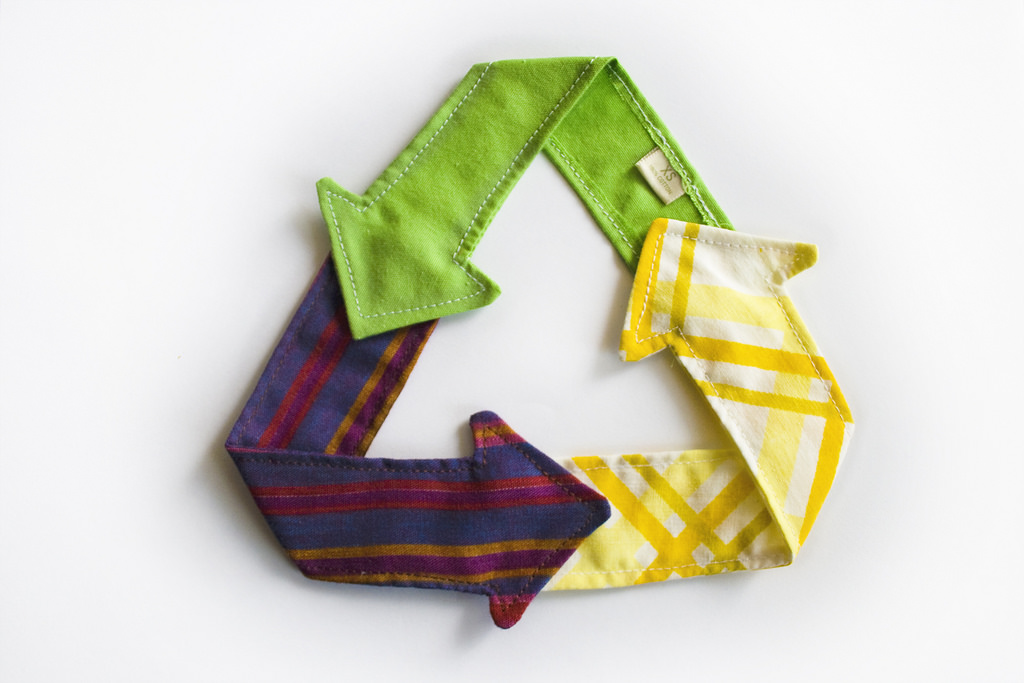
Counting Down the Top 5 Sustainable Fabric Choices
So you’ve decided it’s time to start considering your effect on the environment. You’ve ditched the plastic straws for reusable stainless steel. You’ve made it a habit to bring reusable bags to the grocery store. You even started carpooling to work. But have you ever considered some of the biggest environmental culprits could be hiding in your closet?
Usually when we think about environmental waste the first thing that comes to mind is plastic and while plastic waste is still a huge contributor, it definitely isn’t the only thing that’s been taking its toll on the environment. Did you know that second to oil, the clothing and textile industry is the largest polluter in the world?
As Canadians we contribute more than 12 million tonnes of clothing and textiles into the waste stream every year. It’s become so easy and cheap to buy clothing many of us don’t stop to realize that the new t-shirt we just had to have used 2,650 litres of water to produce. If you’re not convinced that we’ve got a problem yet, here are a few more staggering statistics:- About 15% of clothing fabric ends up on the cutting room floor.
- Up to 95% of the textiles that are landfilled each year could have been recycled.
- Canadians on average purchase 70 new articles of clothing a year.
- Estimates show that Ontario generates 500,000 tonnes of clothing and textile waste every year and that number is expected to grow rapidly.
- Consumers in the UK have an estimated $46.7 billion worth of unworn clothing in their closets.
So now let’s count down some of our favourite guilt free fabrics!
- Biodegradable Bamboo.
It almost seems like nowadays anything can be made using bamboo! From toothbrushes to cutting boards- if you’ve been trying to live a sustainable life you are no stranger to Bamboo. Antibacterial and biodegradable, bamboo is rapidly becoming a popular fabric source in the clothing industry. But the natural fiber made from bamboo has its downsides. While it may grow quickly, need little water to create and require no fertilizers or pesticides to grow, the process of turning bamboo into fabric is chemically intensive and it still produces a fair amount of waste.
- Cautious Cotton
Chances are most pieces of clothing in your closet are made from this popular fibre. Cotton is one of the most common fabrics in the textile industry and for good reason. It’s hypoallergenic, breathable, durable and made from non-genetically modified plants. Another great advantage to cotton is that it won’t retain odor. This means you’ll be needing to wash your clothing less which will keep them in great condition while saving you money, time and water. Unfortunately, cotton has created a high environmental demand. Although, it’s a great option it doesn't quite make it to the top of our list!
- 3. Lasting Linen.
Linen is a natural plant fiber that has been around for thousands of years. It adds a timeless, elegant and understated staple to any wardrobe. It was believed in ancient times to have healing properties given that it is hypoallergenic, antibacterial and breathable. 30% more durable than cotton, it remains the world's strongest natural fiber and will last you for decades! It also requires little water and no chemical fertilizers or pesticides to grow. So what are the drawbacks? Since it is better quality, linen is typically a more expensive (but worthwhile), option. It also has a tendency to wrinkle, so keep your steamer handy!
- Helpful Hemp.
It seems as if the pros are endless for this ecological and sustainable trailblazer.
Similar to linen, Hemp is an extremely durable option that has a tendency to bunch and crease in areas. It is naturally resistant to insects, easy to care for and requires little water. Hemp also grows so rapidly that it has become one of the most renewable fibers in the clothing industry. Besides being reusable and biodegradable it’s also non-polluting during its life cycle. I struggled to find cons for this fabric besides the fact that it’s hard to spin on its own and often has to be mixed with cotton (which could affect its ability to be recycled).
- 1. Upcycled Existing Fabric.
Unsurprisingly, the best option is always to repurpose what you already have. Upcycling is the process of converting something old into something new. If you’re tired of your existing closet, think of ways that you can transform what you already have into new pieces that better reflect your current style. Get fun with your fashion! An easy cut with scissors can turn a baggy sweater into a cute crop, or a long dress into a playful skirt. And if you're not too savvy with the scissors, you can save clothing from the waste stream and purchase pre-loved clothing and fabric or high quality sustainable pieces that will last you a lifetime:)

